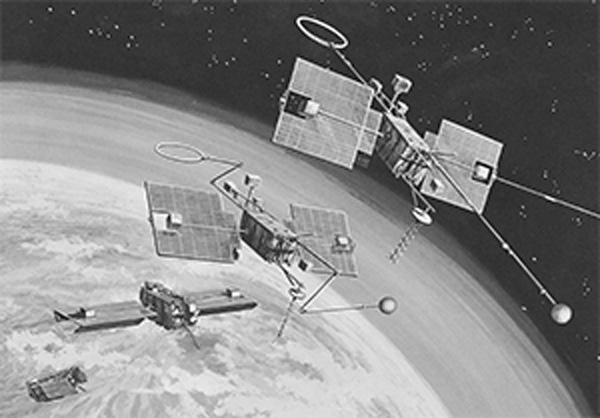Vintage NASA satellite falls to Earth, meets fiery doom after 56 years in space
RIP, OGO-1 satellite. You've had a long trip since 1964.

A long-retired NASA satellite burned up in Earth's atmosphere over the weekend, the agency has confirmed.
NASA launched the satellite, called Orbiting Geophysics Observatory 1, or OGO-1, in September 1964, the first in a series of five missions to help scientists understand the magnetic environment around Earth. OGO-1 was the first to launch but the last to fall out of orbit; the satellite had circled Earth aimlessly since its retirement in 1971.
But orbiting Earth is a tricky thing to do, since the particles in our plush atmosphere collide with spacecraft and slow them down, even at very high altitudes where the atmosphere is thin. That speed reduction also lowers the spacecraft's altitude, until reentry becomes inevitable.
Related: The biggest spacecraft ever to fall uncontrolled from space
The 1,070-lb. (487 kilograms) OGO-1 experienced that inevitability on Saturday (Aug. 29), as NASA had predicted. An updated reentry prediction from NASA's Center for Near-Earth Objects at the Jet Propulsion Laboratory put satellite's fall at about 4:44 p.m. EDT (2044 GMT) over the southern Pacific Ocean , with it burning up in the atmosphere, posing no threat to humans, NASA officials told Space.com in an email.
The spacecraft hit the atmosphere about 25 minutes earlier than NASA had forecast, according to NASA, resulting in a reentry location east of the agency's predictions. OGO-1 was forecast to reenter about 100 miles (160 kilometers) southeast of Tahiti,; in addition to tracking the satellite, NASA received reports of the event from people on the island.
OGO launches continued through 1969, when OGO-5 began orbiting Earth, but all OGO-1's successors had already re-entered Earth's atmosphere.
Breaking space news, the latest updates on rocket launches, skywatching events and more!
Editor's note: This story was updated Sept. 4 to indicate that the final reentry time and location for OGO-1 was based on a final prediction from NASA's Center for Near-Earth Objects at the Jet Propulsion Laboratory .
Email Meghan Bartels at mbartels@space.com or follow her on Twitter @meghanbartels. Follow us on Twitter @Spacedotcom and on Facebook.

Meghan is a senior writer at Space.com and has more than five years' experience as a science journalist based in New York City. She joined Space.com in July 2018, with previous writing published in outlets including Newsweek and Audubon. Meghan earned an MA in science journalism from New York University and a BA in classics from Georgetown University, and in her free time she enjoys reading and visiting museums. Follow her on Twitter at @meghanbartels.

